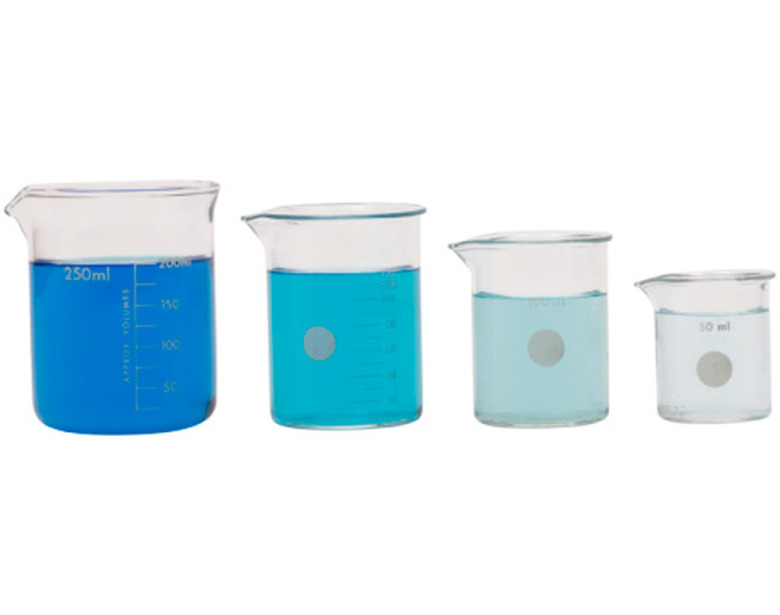How To Convert PPM Into Percent W/V
Labs often use both parts per million and percent weight per volume to describe the concentration of chemicals in solution. These descriptions are similar in some ways but also have some differences. Parts per million communicates the grams of chemical per million grams of solution (or milligrams per 1,000 grams), whereas percent w/v gives the grams of chemical per 100 milliliters of solution. You can convert from ppm to percent w/v using some basic math and the density of your solution.
Step 1
Divide the ppm value for your solution concentration by 10. Since ppm can be translated as milligrams chemical per 1,000 grams of solution, this calculation converts the concentration into milligrams chemical per 100 grams solution. For example, if you had a 200 ppm solution of salt (NaCl) in water, you would divide this by 10 to obtain 20 milligrams NaCl per 100 grams solution.
Step 2
Multiply the value you just calculated by the density of the solution in grams per milliliter. This calculation gives you the concentration of the solution in units of milligrams chemical per 100 milliliters of solution. In the case of the NaCl example, you would multiply 20 by 0.998 grams per milliliter (the density of a dilute salt solution at room temperature) to obtain 19.96 milligrams NaCl per 100 milliliters solution.
Step 3
Divide the value from the previous calculation by 1,000. This converts the units of concentration into grams chemical per 100 milliliters. Since the grams of chemical per 100 milliliters solution is the same as percent weight per volume, this new value is the percent w/v, which is equivalent to your original ppm concentration value. With the NaCl example, dividing 19.96 by 1000 gives 0.01996 grams NaCl per 100 milliliters, so the concentration of the solution is 0.01996 percent w/v.
TL;DR (Too Long; Didn't Read)
Most dilute solutions in water near room temperature will have a density very close to 1 gram per milliliter, so you can usually assume this is the solution density without introducing much error into your conversion.
This conversion assumes that the parts per million concentration value is on a weight per weight basis, which is the most common usage of ppm.
Cite This Article
MLA
Judge, Michael. "How To Convert PPM Into Percent W/V" sciencing.com, https://www.sciencing.com/convert-ppm-percent-wv-8429664/. 24 April 2017.
APA
Judge, Michael. (2017, April 24). How To Convert PPM Into Percent W/V. sciencing.com. Retrieved from https://www.sciencing.com/convert-ppm-percent-wv-8429664/
Chicago
Judge, Michael. How To Convert PPM Into Percent W/V last modified March 24, 2022. https://www.sciencing.com/convert-ppm-percent-wv-8429664/
